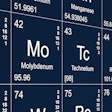
Interventional radiologists are often called to perform peripherally inserted central venous catheter (PICC) procedures. Recent coding and policy changes bundle all imaging guidance and the confirmation of final placement into a single current procedural terminology (CPT) code. Let's review the financial implications of those changes.
The Medicare fee schedule for 2019 made significant changes in the reimbursement for PICC insertions and replacements. For procedures performed in the hospital setting, the cuts to the PICC procedure codes themselves were small. However, the overall reimbursement for the PICC procedures was decreased by 25% to 36% after factoring in the loss of separate billing for imaging guidance and confirmation of placement, which are now bundled into a single procedure code.
The following tables illustrate the difference in coding and reimbursement between 2019 and 2018 using the unadjusted national Medicare fee schedule1.
| Coding and reimbursement changes from 2018 to 2019: Insertion of PICC |
|||
| Description | CPT code | 2019 | 2018 |
| Insertion of a PICC without subcutaneous port or pump, including all imaging guidance, image documentation, and all associated radiological supervision and interpretation; age 5 years or older | 36573 | $88.30 | N/A |
| Insertion of a PICC without subcutaneous port or pump | 36569 | N/A | $88.56 |
| Fluoroscopic guidance | 77001-26 | $19.08 | |
| Chest x-ray | 71045-26 | $9.36 | |
| Total Medicare allowable | $88.30 | $117 | |
| Change in reimbursement | -25% | ||
| Coding and reimbursement changes from 2018 to 2019: Replacement of PICC |
|||
| Description | CPT code | 2019 | 2018 |
| Complete replacement of a PICC without subcutaneous port or pump, through the same venous access; added for 2019: including all imaging guidance, image documentation, and all associated radiological supervision and interpretation | 36584 | $62.35 | $68.76 |
| Fluoroscopic guidance | 77001-26 | $19.08 | |
| Chest x-ray | 71045-26 | $9.36 | |
| Total Medicare allowable | $62.35 | $97.20 | |
| Change in reimbursement | -36% | ||
Radiologists frequently view PICC procedures as a nuisance, since they are usually unscheduled and often occur at inopportune times. The radiologists have to stop what they are doing, go to the procedure room, scrub and sterile prep, perform the procedure, and then return to the reading area after completing the necessary documentation -- all for less than $100 of reimbursement.
During that same time, the radiologist could have interpreted several exams that generate more combined reimbursement. For comparison, the following procedures carry values similar to the PICC replacement.
| Comparison of procedures with similar reimbursement values | |||
| Description | CPT code | Work relative value units | Total relative value units |
| PICC replacement | 36584 | 1.20 | 1.73 |
| CT abdomen without contrast | 74150-26 | 1.19 | 1.70 |
| MRA head without contrast | 70544-26 | 1.20 | 1.71 |
| CT lower extremity with and without contrast | 73702-26 | 1.22 | 1.73 |
| CT lumbar spine with contrast | 72132-26 | 1.22 | 1.74 |
PICC procedures are perfectly suited to be performed by radiologist assistants (RA), and in fact, RAs do perform these procedures regularly. However, the supervising radiologist is not allowed to bill for the professional component under the current Medicare Physician Fee Schedule rules.
 Sandy Coffta from Healthcare Administrative Partners.
Sandy Coffta from Healthcare Administrative Partners.Hospitals may bill for the technical component of such procedures performed by RAs, regardless of whether the RA is employed by the hospital or the radiologist. Radiologists have to decide, therefore, whether to do the procedure themselves and receive the reimbursement or forego the reimbursement and have the RA do the procedure.
The 2019 revision to the Medicare regulations allows RAs to work under "direct supervision" rather than under the "personal supervision" of the radiologist. While this change will allow more flexibility, it applies only to the hospital's billing of the technical component.
Recently introduced federal legislation may change things to allow the radiologist to be reimbursed. The Medicare Access to Radiology Care Act (MARCA) was introduced in Congress on March 28 with bipartisan support in the House of Representatives. It would allow radiologists to submit Medicare claims for imaging services performed by RAs in hospitals and non-imaging services performed in the hospital or office setting.
We will follow this bill and report its progress toward becoming law.
Notes
- The national Medicare fee schedule is not adjusted for geographic indices. The fees for a specific area are available by using the Physician Fee Schedule Look-up Tool. Additional detailed information is available at www.cms.gov to help physicians connect to their Medicare Administrative Contractor (MAC), which manages each specific region's Medicare rates. The MAC jurisdiction map is also a helpful resource.
Sandy Coffta is vice president of client services at Healthcare Administrative Partners.
The comments and observations expressed are those of the author and do not necessarily reflect the opinions of AuntMinnie.com.


















